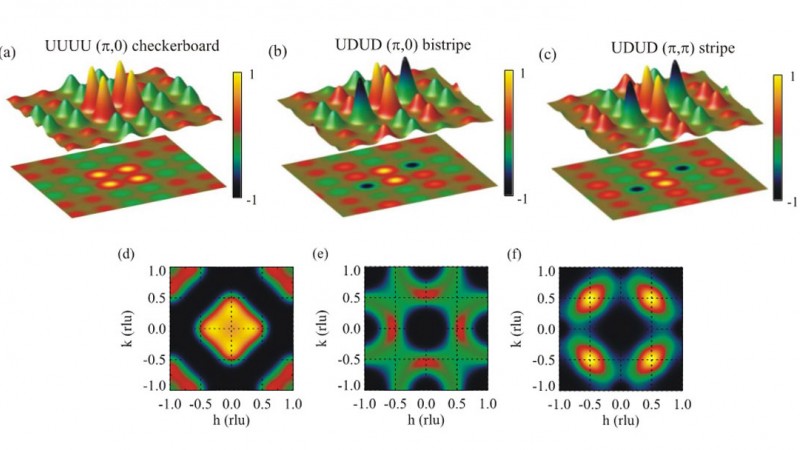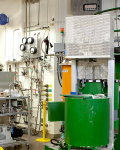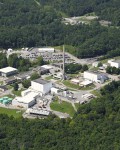Changes in short-range, transient order in competing liquid-like phases precede onset of superconductivity
UPTON, N.Y.— Despite a quarter-century of research since the discovery of the first high-temperature superconductors, scientists still don't have a clear picture of how these materials are able to conduct electricity with no energy loss. Studies to date have focused on finding long-range electronic and magnetic order in the materials, such as patterns of electron spins, based on the belief that this order underlies superconductivity. But a new study published online the week of August 3, 2015, in the Proceedings of the National Academy of Sciences is challenging this notion.
The study, conducted by researchers from the U.S. Department of Energy's (DOE) Brookhaven National Laboratory and Oak Ridge National Laboratory (ORNL), describes how an iron-telluride material related to a family of high-temperature superconductors develops superconductivity with no long-range electronic or magnetic order when "doped" with a small amount of sulfur. In fact, the material displays a liquid-like magnetic state consisting of two coexisting and competing disordered magnetic phases, which appears to precede—and may be linked to—its superconducting behavior.
"Our results challenge a number of widely accepted paradigms into how unconventional superconductors work," said the study's lead researcher, Brookhaven physicist Igor Zaliznyak. "I believe that we have uncovered an important clue to the nature of magnetism and its connections to superconductivity in the iron-based superconductors."
This advance could open up a new avenue for exploring the emergence of a property with great potential for widespread use. Conventional superconductors, which must be chilled to extremely low temperatures to operate, already play a key role in many modern technologies, from medical magnetic resonance imaging (MRI) to maglev trains. New clues about the function of unconventional superconductors, which do not need to be super-cooled, could lead to many more technologies, including, potentially, zero-energy-loss power transmission lines and other important energy applications. Indeed, other materials based upon a similar structure as the material studied here canoperate as superconductors at these "warmer" temperatures, so understanding the physics of this close relative has many important implications.





